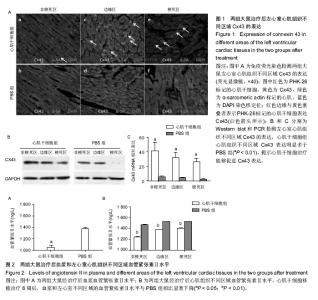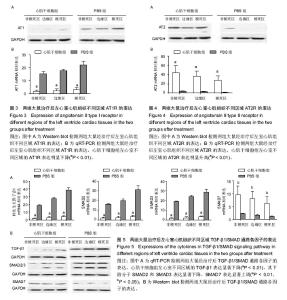| [1] Priori SG, Blomström-Lundqvist C, Mazzanti A, et al. 2015 ESC Guidelines for the management of patients with ventricular arrhythmias and the prevention of sudden cardiac death: The Task Force for the Management of Patients with Ventricular Arrhythmias and the Prevention of Sudden Cardiac Death of the European Society of Cardiology (ESC)Endorsed by: Association for European Paediatric and Congenital Cardiology (AEPC). Europace. 2015;17(11): 1601-1687.
[2] San Roman JA, Sánchez PL, Villa A, et al. Comparison of Different Bone Marrow-Derived Stem Cell Approaches in Reperfused STEMI. A Multicenter, Prospective, Randomized, Open-Labeled TECAM Trial. J Am Coll Cardiol. 2015;65(22):2372-2382.
[3] Malliaras K, Makkar RR, Smith RR, et al. Intracoronary cardiosphere-derived cells after myocardial infarction: evidence of therapeutic regeneration in the final 1-year results of the CADUCEUS trial (CArdiosphere-Derived aUtologous stem CElls to reverse ventricUlar dySfunction). J Am Coll Cardiol. 2014;63(2):110-122.
[4] Matsuda T, Miyagawa S, Fukushima S, et al. Human cardiac stem cells with reduced notch signaling show enhanced therapeutic potential in a rat acute infarction model. Circ J. 2014;78(1):222-231.
[5] Zheng S, Zhou C, Weng Y, et al. Improvements of cardiac electrophysiologic stability and ventricular fibrillation threshold in rats with myocardial infarction treated with cardiac stem cells. Crit Care Med. 2011; 39(5):1082-1088.
[6] Hou J, Wang L, Jiang J, et al. Cardiac stem cells and their roles in myocardial infarction. Stem Cell Rev. 2013; 9(3):326-338.
[7] Zheng SX, Weng YL, Zhou CQ, et al. Comparison of cardiac stem cells and mesenchymal stem cells transplantation on the cardiac electrophysiology in rats with myocardial infarction. Stem Cell Rev. 2013;9(3): 339-349.
[8] Borghi C, SIIA Task Force, Rossi F, et al. Role of the Renin-Angiotensin-Aldosterone System and Its Pharmacological Inhibitors in Cardiovascular Diseases: Complex and Critical Issues. High Blood Press Cardiovasc Prev. 2015;22(4):429-444.
[9] Jiao KL, Li YG, Zhang PP, et al. Effects of valsartan on ventricular arrhythmia induced by programmed electrical stimulation in rats with myocardial infarction. J Cell Mol Med. 2012;16(6):1342-1351.
[10] Purnomo Y, Piccart Y, Coenen T, et al. Oxidative stress and transforming growth factor-β1-induced cardiac fibrosis. Cardiovasc Hematol Disord Drug Targets. 2013;13(2):165-172.
[11] Schulz R, Görge PM, Görbe A, et al. Connexin 43 is an emerging therapeutic target in ischemia/reperfusion injury, cardioprotection and neuroprotection. Pharmacol Ther. 2015;153:90-106.
[12] Rutledge CA, Ng FS, Sulkin MS, et al. c-Src kinase inhibition reduces arrhythmia inducibility and connexin43 dysregulation after myocardial infarction. J Am Coll Cardiol. 2014;63(9):928-934.
[13] Maizels L, Gepstein L. Gap junctions, stem cells, and cell therapy: rhythmic/arrhythmic implications. Heart Rhythm. 2012;9(9):1512-1516.
[14] Smit NW, Coronel R. Stem cells can form gap junctions with cardiac myocytes and exert pro-arrhythmic effects. Front Physiol. 2014;5:419.
[15] Gepstein L, Ding C, Rahmutula D, et al. In vivo assessment of the electrophysiological integration and arrhythmogenic risk of myocardial cell transplantation strategies. Stem Cells. 2010;28(12):2151-2161.
[16] Greener ID, Sasano T, Wan X, et al. Connexin43 gene transfer reduces ventricular tachycardia susceptibility after myocardial infarction. J Am Coll Cardiol. 2012; 60(12):1103-1110.
[17] Kim J, Shapiro L, Flynn A.The clinical application of mesenchymal stem cells and cardiac stem cells as a therapy for cardiovascular disease. Pharmacol Ther. 2015;151:8-15.
[18] E Gullo C, de Almeida Zia VA, Vilela-Martin JF. Blockade of renin angiotensin system in heart failure post-myocardial infarction: what is the best therapy. Recent Pat Cardiovasc Drug Discov. 2014;9(1):28-37.
[19] Hussain W, Patel PM, Chowdhury RA, et al. The Renin-Angiotensin system mediates the effects of stretch on conduction velocity, connexin43 expression, and redistribution in intact ventricle. J Cardiovasc Electrophysiol. 2010;21(11):1276-1283.
[20] Hashizume R, Yamawaki-Ogata A, Ueda Y, et al. Mesenchymal stem cells attenuate angiotensin II-induced aortic aneurysm growth in apolipoprotein E-deficient mice. J Vasc Surg. 2011;54(6):1743-1752.
[21] Kaschina E, Lauer D, Schmerler P, et al. AT2 receptors targeting cardiac protection post-myocardial infarction. Curr Hypertens Rep. 2014;16(7):441.
[22] Numasawa Y, Kimura T, Miyoshi S, et al. Treatment of human mesenchymal stem cells with angiotensin receptor blocker improved efficiency of cardiomyogenic transdifferentiation and improved cardiac function via angiogenesis. Stem Cells. 2011; 29(9):1405-1414.
[23] Sovari AA, Morita N, Weiss JN, et al. Serum transforming growth factor-beta1 as a risk stratifier of sudden cardiac death. Med Hypotheses. 2008;71(2): 262-265.
[24] Lu G, Xu S, Peng L, et al. Angiotensin II upregulates Kv1.5 expression through ROS-dependent transforming growth factor-beta1 and extracellular signal-regulated kinase 1/2 signalings in neonatal rat atrial myocytes. Biochem Biophys Res Commun. 2014; 454(3):410-416.
[25] Zhang Y, Kanter EM, Yamada KA. Remodeling of cardiac fibroblasts following myocardial infarction results in increased gap junction intercellular communication. Cardiovasc Pathol. 2010;19(6): e233-240.
[26] Ding YF, Peng YR, Li J, et al. Gualou Xiebai Decoction prevents myocardial fibrosis by blocking TGF-beta/ Smad signalling. J Pharm Pharmacol. 2013;65(9): 1373-1381. |



